As a classroom teacher, I understand the overwhelming pressure and anxiety that students experience during state test preparation. For many, the thought of taking these exams can be daunting and stressful. However, I have discovered some fantastic digital tools that have transformed the experience from dreaded to delightful.
To make test prep engaging and enjoyable, it is essential to use differentiated instruction, integrate robots, and incorporate project-based learning. With these three elements, students can develop a deep understanding of the material while having fun along the way.
Differentiate Instruction
Differentiating instruction is essential to help prepare students for state testing. Every student learns differently, and teachers must tailor their instruction to meet the individual needs of their students. Technology is a powerful tool that can help educators differentiate instruction while also making the learning experience more engaging and fun for students. In particular, two technologies that have shown promise in differentiating instruction and helping students prepare for state testing are Merge and Owlet.
Merge is a virtual (VR) and augmented reality (AR) platform that provides students with the opportunity to explore and interact with virtual objects and environments. Merge offers a unique solution for AR that is built specifically for K-12 learning and is aligned with the Next Generation Science Standards (NGSS), the ISTE Standards for Students, and individual state science standards for all 50 US states. One distinctive feature of Merge’s approach to AR is its ability to allow students to touch virtual objects, bringing a hands-on aspect to a digital experience. This is achieved through the Merge Cube – a small foam cube that can be easily manipulated with one’s hands. When viewed through a device’s camera, the Merge Cube transforms into a virtual object that the user can inspect and interact with naturally.
With Merge, educators can create 3D shapes, virtual field trips, and even conduct virtual dissections. This technology allows students to gain a deeper understanding of complex concepts and ideas, which can help them perform better on state tests. Merge also provides activity plans and STEM projects in Merge EDU, which are designed to be teacher-led or student-led so that students can successfully complete them on their own or in groups, at home, or in the classroom.
Take a look at the following video to see how some schools are utilizing these advanced technologies in their classrooms.
https://www.nbcmiami.com/video-layout/amp_video/?noid=1:10:2731644&videoID=2020890691683&origin=nbcmiami.com&fullWidth=y&turl=https%3A%2F%2Fedgeucating.com%2Ftake-state-test-prep-from-dreaded-to-delightful%2F&ourl=https%3A%2F%2Fedgeucating.com&lp=5&fullWidth=y&random=ddv6zd&callletters=wtvj&embedded=true&autoplay=false
Additionally, Merge can be used to create interactive quizzes and assessments. For example, you could create a quiz where students have to identify different parts of a plant or animal. The quiz could be set up in a way where students have to use the Merge product to manipulate the object and identify the correct parts. This would make the assessment more engaging and interactive for students, and it would also allow you to assess their understanding of the concept in a more meaningful way.
Owlet from BirdBrain Technologies is another technology that can help students prepare for state tests. Owlet provides two manipulatives, Glow and Cube, which can be combined with digital apps to make abstract math concepts more concrete for students in grades K-5. This technology allows students to program and control tools that help them better understand math concepts while also providing instant feedback in a digital platform.
Glow is an LED display and etch-a-sketch combination that allows students to turn dials and press buttons to control the board’s embedded LED lights, illustrating operations, writing math equations, and modeling fractions. Students can visualize math concepts in a new, concrete way by seamlessly connecting Glow to three free custom-made apps, GlowGrid, GlowPix, and Fractions. Cube is a sensor-enabled tower that helps students develop their knowledge of place value concepts. Cube comes with its own set of free, custom-made apps, Cube3 and Cube6.
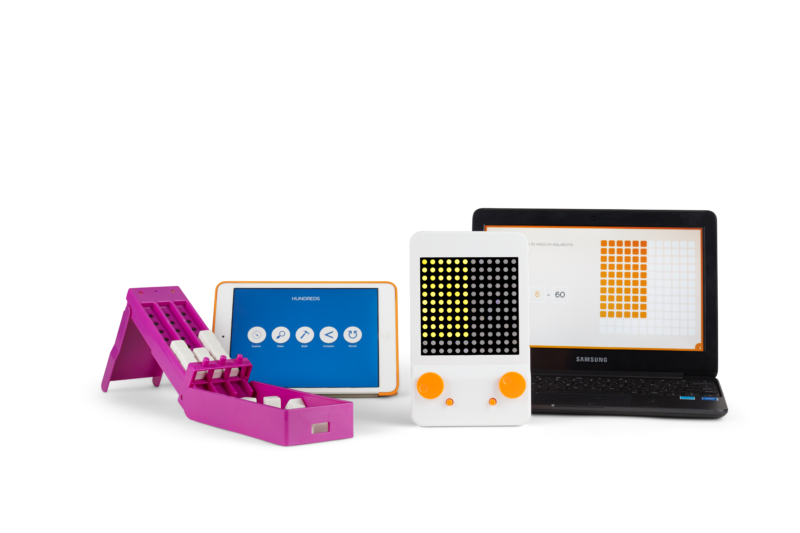
Both Cube and Glow can be used in a variety of classroom instruction situations, including full group instruction, independent work and centers, remediation, and extension work for gifted students. Teachers can incorporate Owlet into their lesson plans to prepare students for state testing while providing opportunities for exploration and discovery. By using Owlet, educators can align their learning goals with the technology’s tools and apps while practicing math that actually looks like math.
Incorporating technology like Merge and Owlet into lesson plans can help educators differentiate instruction and provide engaging opportunities for students to explore and discover concepts in a way that traditional teaching methods cannot. These technologies provide a unique and exciting approach to learning that can help students better understand complex concepts and perform better on state tests.
Integrate Robots
Integrating robots is another interactive and engaging way to help students better understand abstract concepts by making them concrete. They are another great way to help students transition from abstract to concrete with various concepts. Robots can provide a unique learning experience that is both fun and educational. In science, robots can be used to demonstrate concepts such as physics, chemistry, and biology. In mathematics, robots can help students visualize abstract concepts and improve problem-solving skills. In language arts, robots can be used to improve reading skills through interactive storytelling, while also helping students develop communication skills through voice recognition and natural language processing. Robots can even be used in social studies to teach students about historical events and cultures. Robots can be a valuable tool for helping students better understand concepts across the curriculum. There are 4 particular robots that I would suggest having a look at for grades 2 – 8 that can really assist students in state test preparation. These 4 robots are Dash, Finch, Ozobot, and KaiBot.
Dash, Finch, Ozobot, and KaiBot are four robots that can be used to support differentiated instruction in classrooms. These robots have different features and are designed to meet the needs of students at different grade levels and with varying coding experiences. Dash is a robot that can be programmed to perform a variety of tasks, while Finch is designed to be easy to use, even for students with little or no programming experience. Ozobot is a small programmable robot that can be used to teach a variety of subjects, including science, math, language arts, and social studies. KaiBot is an innovative tool that blends coding and learning with 3D visualization to create a fun and engaging learning experience.
Dash
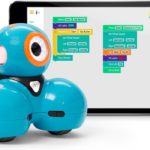
Dash is a robot that can be programmed to perform a variety of tasks. With Dash, students can learn about coding, robotics, and problem-solving in a fun and engaging way. Dash comes with a variety of sensors and actuators that allow students to program the robot to move, dance, and interact with its environment.
One way to use Dash to prepare for state tests is to have students program the robot to solve problems related to the concepts they are learning. For example, if you are teaching a unit on math, you could have students program the robot to solve a series of math problems. This would allow students to apply the concepts they are learning in a real-world context and would help them better understand the concepts they need to know for the test.
Finch
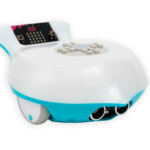
Finch is a programmable robot that can be used to teach coding and computer science concepts to students in a fun and engaging way. The robot is designed to be easy to use, even for students with little or no programming experience.
With Finch, students can learn how to code and program the robot to perform a variety of tasks, such as navigating mazes, following lines, and avoiding obstacles. By using Finch to practice problem-solving and critical thinking skills, students can develop the skills they need to succeed on state testing.
Finch can also be used to teach other subjects, such as mathematics and science. For example, students can program the robot to perform experiments and collect data, helping them to better understand concepts such as velocity, acceleration, and measurement.
Ozobot
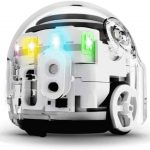
Ozobot is one such tool that I have found to be highly effective in teaching cross-curricular concepts in elementary and middle school. It is a small programmable robot that can be used to teach a variety of subjects, including science, math, language arts, and even social studies. In science, students can use Ozobot to explore concepts such as circuits, energy, and light. In math, students can program Ozobot to solve problems and practice critical thinking skills. In language arts, students can use Ozobot to create interactive stories, practice writing skills, and learn vocabulary. In social studies, Ozobot can be used to teach geography, history, and culture.
What I love about Ozobot is that it can be used in a variety of classroom settings, including independent work, centers, and small group instruction. Ozobot also provides immediate feedback to students, which helps to reinforce learning and improve retention. Be sure to check out our Ozobot Playbook Page for loads of free resources and lesson ideas.
KaiBot
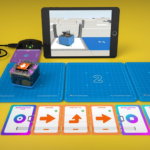
As an educator and training coach, I am always on the lookout for innovative tools that can help my students learn and grow. KaiBot is a new and exciting addition to the market that I believe can be highly effective in teaching cross-curricular concepts in elementary and middle school.
KaiBot can be a valuable tool for helping students better understand concepts across the curriculum. KaiBot is an innovative tool that can help elementary and middle school students develop problem-solving skills and gain an understanding of engineering and robotics principles. This hybrid robot can be highly effective in teaching cross-curricular concepts, including state-tested subjects such as reading, language, math, and science.
KaiBot sets itself apart from other tools through its ability to blend coding and learning with 3D visualization to create a fun and engaging learning experience. Check out KaiBot’s free lesson plans to better understand how this innovative tool can help your students learn and grow. Additionally, you can visit Kainundrum.com and try out their FREE platform.
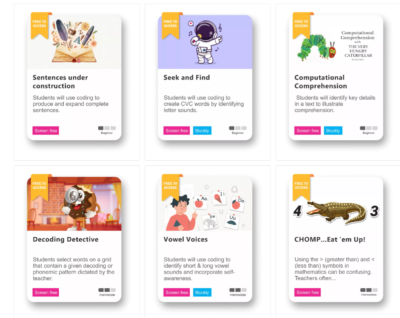
One of the benefits of using robots in the classroom is that they provide immediate feedback to students. This feedback helps to reinforce learning and improve retention. Additionally, robots can be used in a variety of classroom settings, including independent work, centers, and small group instruction. Teachers can also use robots to differentiate instruction by assigning tasks of varying difficulty levels based on the needs of individual students.
Incorporate Project-Based Learning
Project-based learning (PBL) is an educational approach that emphasizes hands-on, real-world learning experiences that engage students in exploring and solving complex problems. It encourages students to work collaboratively, think critically, and develop a deeper understanding of the content. PBL has become increasingly popular in recent years as educators seek to prepare students for success in the 21st-century workplace.
One challenge in implementing PBL is ensuring that students are prepared for state testing. State tests typically focus on specific content areas and skills, and teachers may worry that PBL activities will not adequately prepare students for these assessments. However, with the right resources and strategies, PBL can be an effective way to help students prepare for state testing.
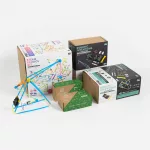
Strawbees is one such resource that can be used in PBL settings to help students prepare for state testing. Strawbees is a hands-on construction kit that enables students to explore engineering, design, and physics concepts in a fun and engaging way. Add a micro:bit and you can really level up the fun!
Using Strawbees, students can create a wide range of structures and machines, from simple to complex, by combining straws and connectors. This encourages them to use their creativity and critical thinking skills to solve problems and develop their own ideas. The kit includes a range of materials such as straws, connectors, and wheels, which allows students to build structures in different shapes and sizes.
By using Strawbees, students can explore concepts related to engineering, design, and physics in a hands-on, engaging way. They can also use Strawbees to explore concepts in other subject areas, such as history and art. Through this process, students develop critical thinking skills, creativity, and teamwork skills that are essential for success on state tests.
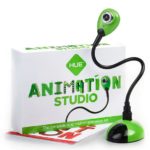
In addition to Strawbees, Hue Animation Studio is another digital tool that can be used to prepare for state tests in a PBL setting. Hue Animation allows students to create stop-motion animations that illustrate concepts they are learning in the classroom. This encourages them to think deeply about the material and find creative ways to communicate their understanding. Additionally, creating animations requires attention to detail and organization, which are important skills for success on state tests.
Project-Based Learning can be an effective way to prepare students for state testing when the right resources and strategies are used. Strawbees and Hue Animation Studio are two resources that can help students develop critical thinking, creativity, and teamwork skills while reinforcing the concepts they are learning in the classroom. By using these resources, educators can ensure that students are well-prepared for state testing while still engaging in meaningful, hands-on learning experiences.
Additional Strategies
In addition to these technologies, there are also several strategies and techniques that teachers can use to help their students prepare for state tests. One such strategy is to use practice tests. By giving students practice tests that mimic the format and content of the state tests, you can help them become familiar with the types of questions they’ll encounter on the actual test. This can help reduce anxiety and improve their performance.
As a teacher, it is important to embrace the use of digital tools in the classroom and incorporate them into state test preparation. Studies have repeatedly shown that technology can be a powerful tool for both student engagement and achievement. These digital tools not only help students prepare for the test but also provide valuable life skills that they can use in their future careers. By transforming state test preparation from dreaded to delightful, we can create a more positive learning environment for our students and help them achieve success in all aspects of their lives. No longer do students need to dread state test preparation. By implementing these approaches, educators can make the process more enjoyable and rewarding for everyone involved.



